Skellig Islands. This nothing less than one of the most special places on the entire earth, says Nicole Buckler.
The Star Wars Connection
With the release of Star Wars: The Force Awakens in 2015, every man and his parrot heard about the island called Skellig Michael. It lies off the coast of Kerry, in Ireland. The haunting and beautiful rock was in the final dramatic scene of the movie, where Rey hands Luke Skywalker his lightsabre after his long rejection of Jedi life.
While this is one of the most emotional scenes in the movie, it’s hard to avoid being distracted by the background. The location is really something else, and it deserves to be discovered. The location is fascinating, beguiling, and mind boggling on a scale that is hard to put into words.
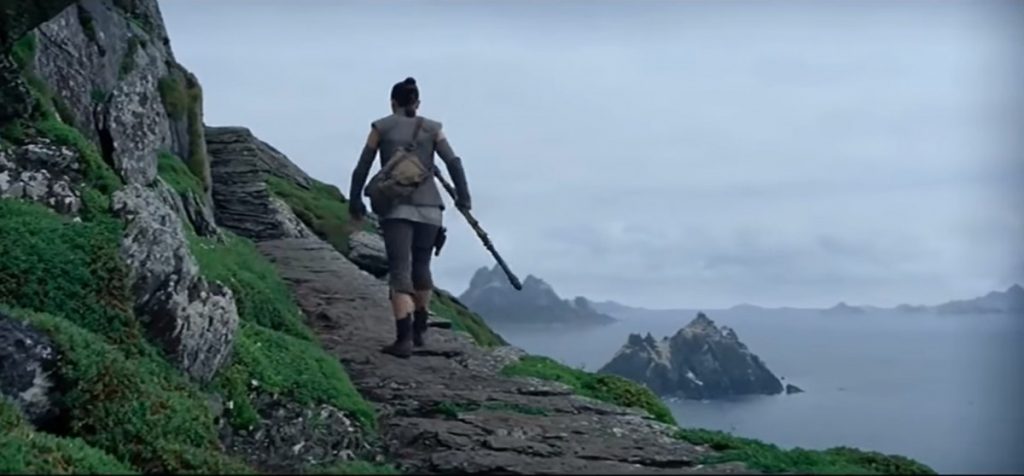
Rey making her climb upwards in Star Wars – The force Awakens
Skellig Location
The Skellig islands are two rocky peaks that jut savagely out of the ocean, lying isolated in the sea off County Kerry.

One of the rocky peaks (named Small Skellig in English) hosts so many birds that their droppings have made it look like a snow-covered peak in the Himalayas. It is a nature reserve, and boats are not allowed to land there. And none would… the seas around it are treacherous and whirlpoolish, like a drain to hell itself. So the seals and birds are left to their own devices, becoming fat and relaxed in the haven it provides them.
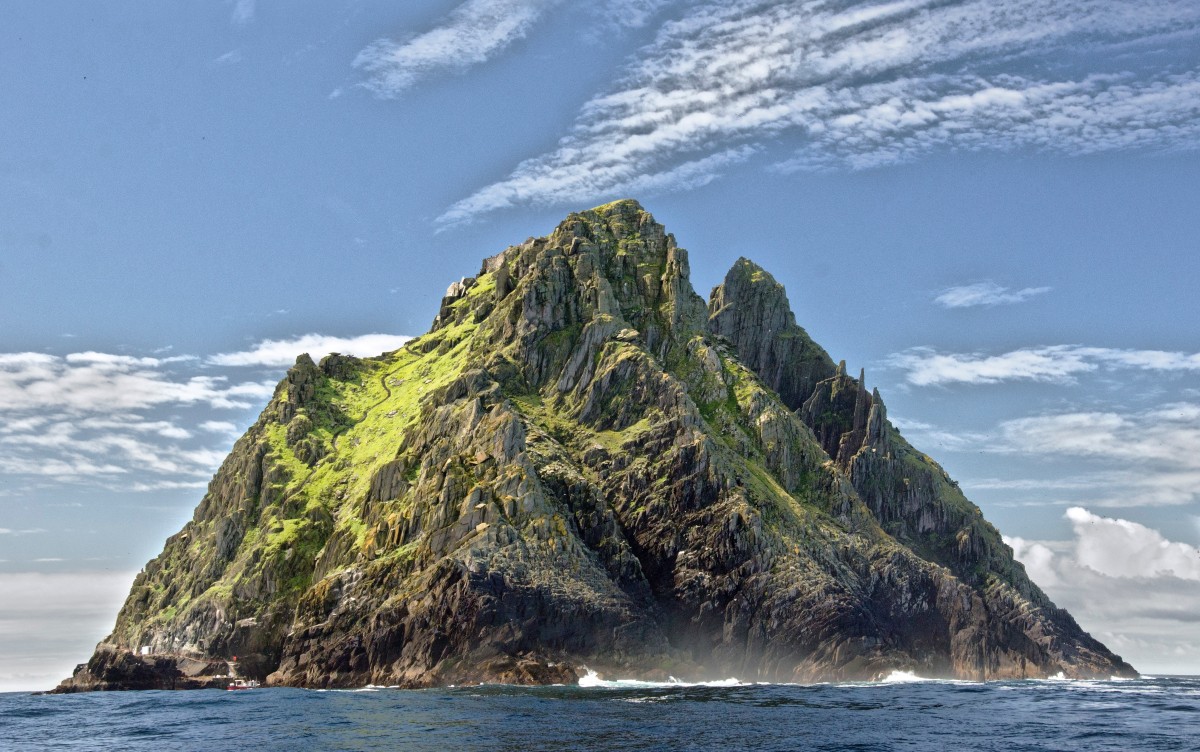
You can see the disembarkation point for boats at the bottom left
Sceilig Mhichíl
The other rocky outcrop, which also juts violently from the dark ocean, is a place worth seeing, if you are game. Sceilig Mhichíl in the Irish language, or just Skellig Michael for English speakers, is a place of mind-boggling historical significance. It was probably founded in the 7th Century as a monastic centre for Irish Christian Monks. But I don’t say “founded” very lightly. The settlement itself is perched nauseatingly on the summit of the pointed rock, 230 metres above sea level.
Here, at this height, the monks lived in stone beehive huts, which cling to the top of the rock. They are situated above vertical cliff walls which plunge dramatically into the sea. The only perimeter wall to the dwellings is an unbelievable vista and not much else.
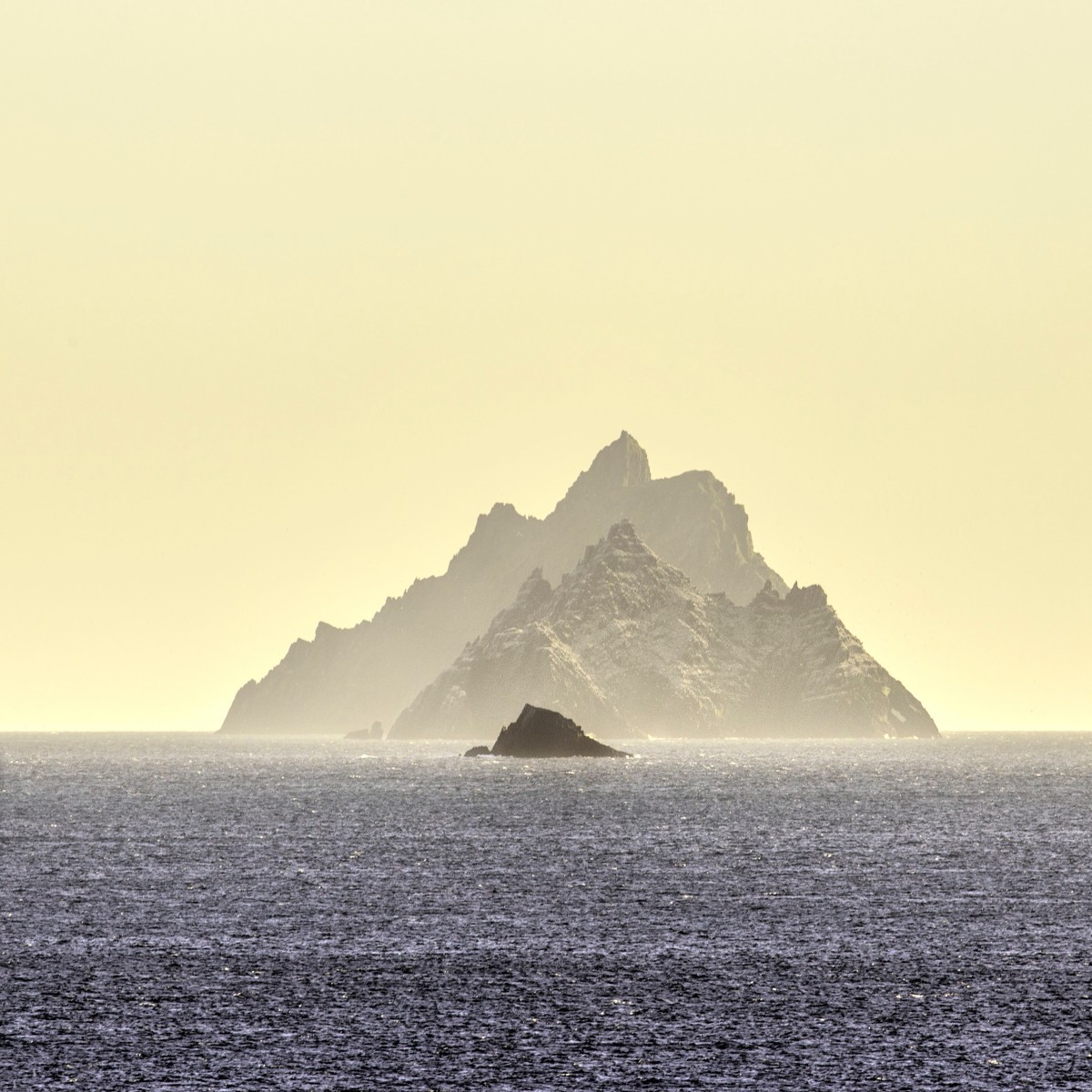
The Skelligs
Because of its extreme isolation, the settlement, once it had been deserted, remained almost perfectly preserved, until it’s rediscovery and use much later as a place to build a lighthouse. It became a UNESCO World Heritage Site in 1996. It is one of Europe’s most intriguing but least accessible sites. This makes it all the more attractive for the adventurers amongst us, when our YOLO is triggered.
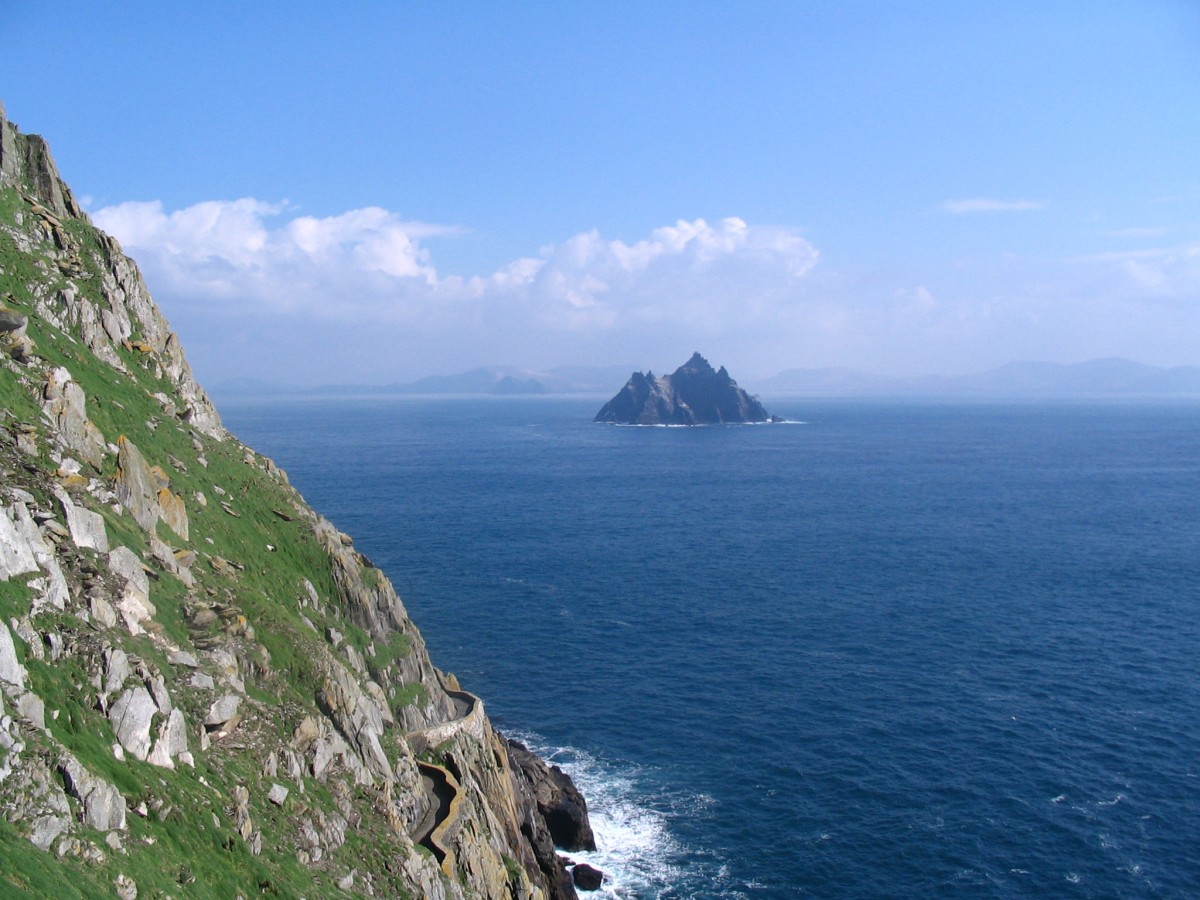
The Journey There
Convincing the local fisherman to take you out to the Skelligs on your timescale is another story altogether. For most of them their primary income is fishing. Tourism is tidy second income but not their primary mode of operation. So it can take some effort to fling yourself out onto the jagged rocks. Also, there are serious restrictions on how many people can go to the island in any one day.
Even on a nice day, the waves crash against the rock with such ferocity that passengers trying to disembark are at risk of losing a limb or even their life.

We were the first tourists to go that year, the boats do not visit while the winter seas at the their most treacherous. So we had a problem: disuse. To scramble onto Skellig Michael, you must jump from the boat onto stone steps carved into the rock. The rock steps were covered in slime and ice from not being used for 9 months. With every downward motion of the boat we had to throw sand onto the steps. This was to give us some sort of traction as we hurled ourselves at Skellig Michael and hope that he would catch us and not throw us into a swirling sea.
The process was a little heart-grabbing. We managed to get on the rock after much boat-to-rock acrobatics. The sailor yelled at us, “See ye in two hours!” and took off. He said he couldn’t stay close to the rocks or his boat will get smashed up against them and sink like it did last year. Um what?
The Climb
Armed with sensible shoes and water, we set out for the treacherous climb up the rock to the monk’s settlement. The settlement was set up in the sixth century, when some monks thought it a good idea to “punish” themselves by living on the edge of existence in borderline starvation conditions. This was to show their God that they knew what sacrifice and poverty and discipline were. I personally think they were a bit bonkers. No actually they were a lot bonkers. Not only did they build a monastery out on a god forsaken rock in the middle of the sea, they built it at the top of the rock. To live at the jagged peak, they had to hand-build 1000 rock steps to the top.
The rock steps the monks used in their daily prostrating are still there today, all of these lifetimes later. The steps snake their way skinnily along sheer cliff drops. The trip is not for the faint-hearted or the even mildly uncoordinated.
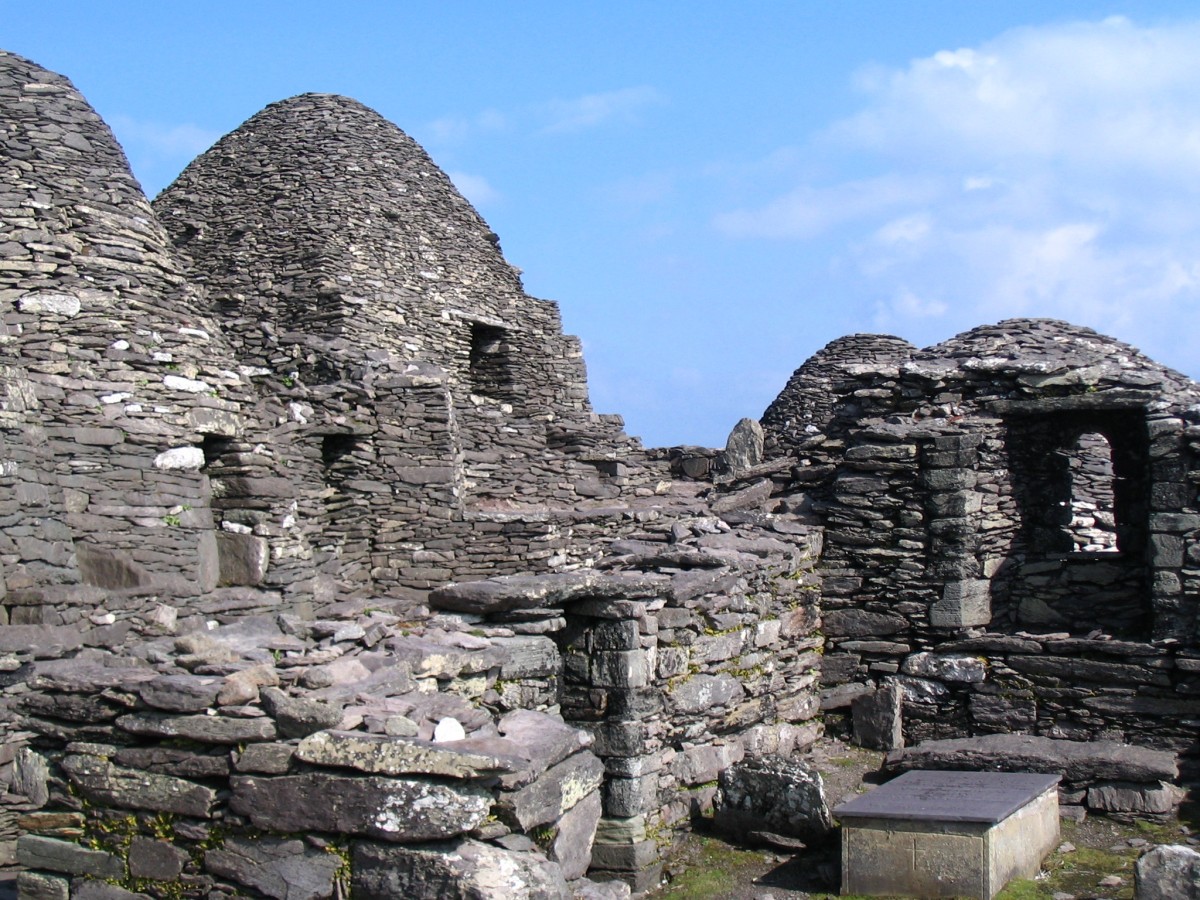
The ancient Skellig Michael beehive huts.
The monks wanted to grow food up there – but there wasn’t any soil to grow anything. So they imported it from the mainland, a laborious process that someone who didn’t believe in God wouldn’t even attempt. Mainly the monks’ diet consisted of dried seagull (if they could catch any) and seal steaks (if they could spear any) and scurvy grass. It was a very lean diet in a cold and windy place. I hope getting into the afterlife afterwards was worth it.
Insanity
How anyone lived on this rock and made their life there was astounding. It was an exercise in insanity. A plaque at the pier on the mainland reads, “It is a damp, windy, sterile crag rising from the sea, so barren that the monks had to import soil to grow their food in, so gusty and bedevilled by storms that the monks could count the clear, calm sunny days of each year on two hands.
Getting there even across the relatively short distance from County Kerry, was never an easy proposition. Choppy seas, volatile weather, terrible anchorages and the sheer, slippery steepness of the place discouraged casual visits.”
The route up is a terrifying climb. By the time you reach the top, you fail to understand even further how living here could even remotely be close to God. No. This was a place of self-hatred, self-banishment and self-punishment. Once at the top, though, all is forgiven. Those views.

The ancient Skellig Michael graveyard.
The Reward
At the end of the treacherous climb, the sky cleared and it was sunny for about two hours. According to the fisherman, this only happens about 5 times a year at the Skelligs. When the sun touches it, it is an amazing place. It’s right up there with the best of the crazy-amazing human achievements that were just a bit too extra.
Preservation
The monastery itself is remarkably preserved from when it started its life in the dark ages. To think that monks lived here writing manuscripts, on a survival knife’s edge, seems like a fantasy weaved for the sake of tourism. But no, it really happened. Not only was it hard to even survive here, but it was also a place that was being constantly attacked by pirates, who were raiding for food (like scurvy grass) that kept disease at bay. And, the pirates stole manuscripts that were lovingly produced by the monks. It was an attack from all sides.
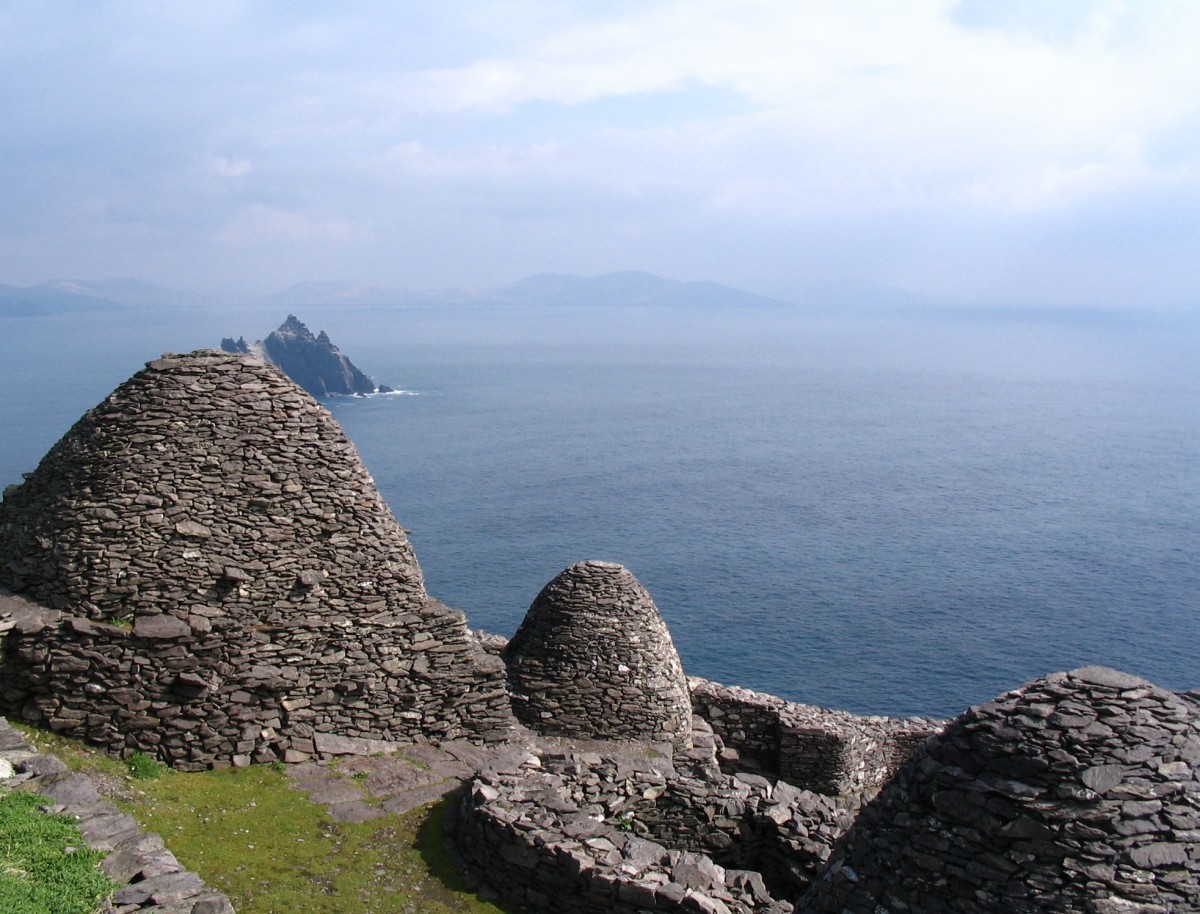
Those views though
To modern eyes, the place is absolutely haunting, and I can’t imagine these monks being anything other than lonely, isolated and bloody cold. They really must have believed in Paradise, and that they were going there on a direct ticket. There was no other reason you’d voluntarily make any kind of life in such an obnoxiously uncomfortable place.
If you think you’d be scared climbing up the stairs, climbing down is ten times worse. This is because when you go down you are looking right over the cliff, and vertigo takes a hold of you and offers to show you your God at any given time. If I was one of the monks, I would never come down. I would stay up there forever eating dried seagull and seal steaks and scurvy grass and other dead monks, probably.
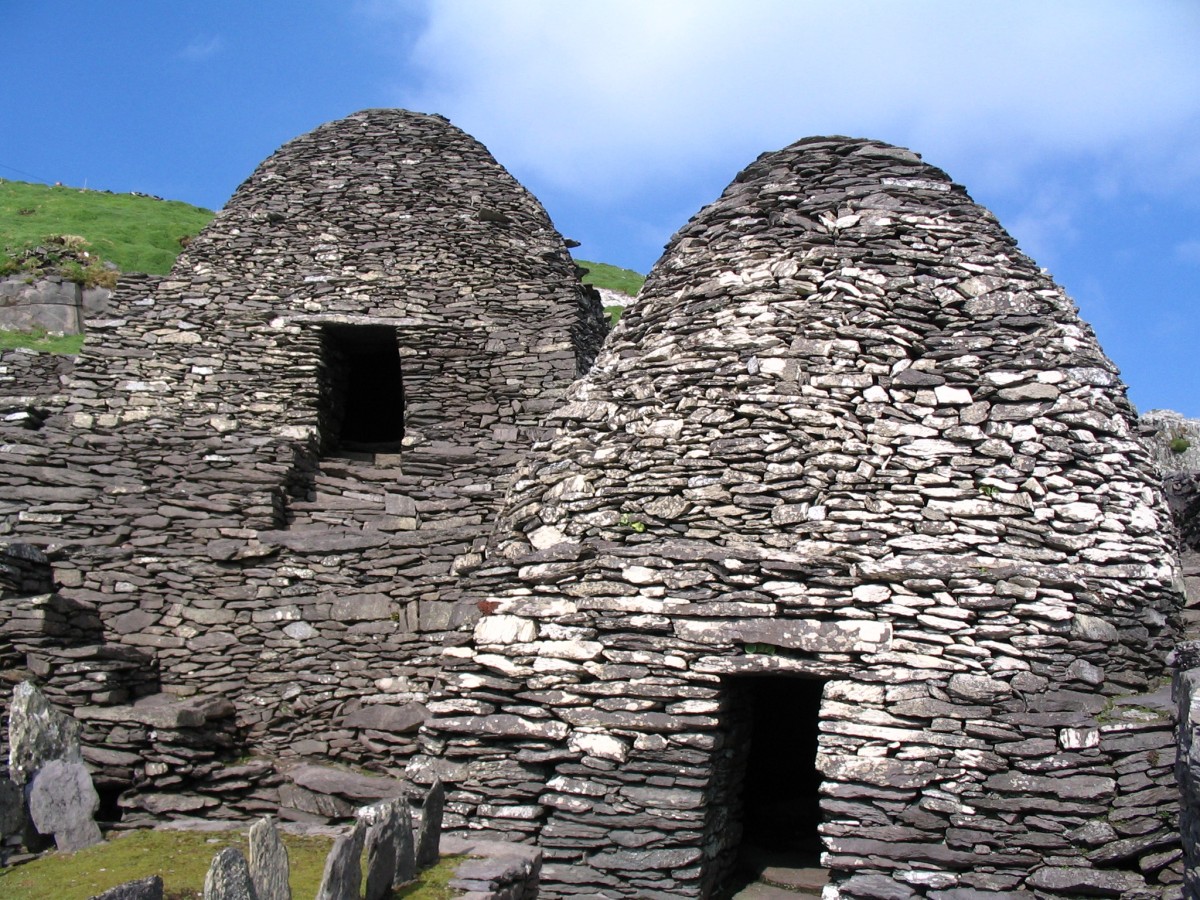
The stone beehive huts were the only protection from the high winds
The Take Away
Ireland is known as the land of scholars. Even in its most desperate and poor times, of famine and of war, the Irish people sought to be educated. They had a thirst for the spiritual and the intellectual. And Skellig Michael is testament to the fact that this type of Irishness: Irish people are intellectuals above all else, even above starvation and weather and winds and pirates and dried seagulls. Skellig Michael is one of the most remarkable remnants of ancient Ireland and the dark ages. It is completely intact after all of this time…which is incredible. It’s is a testament to both intense religious worship, and deep, dark, human insanity. ■
Getting There
First, get yourself to Dublin, then to Kerry, via internal flight or hire car. To get to the Skellig Islands, first you must station yourself at the tiny town on the coast called Port Magee. The boats go out from the pier here, in the warmer months.
Not into the long haul flight? Then how about an outback adventure?

Editor for Silver Magazine Gold Coast

